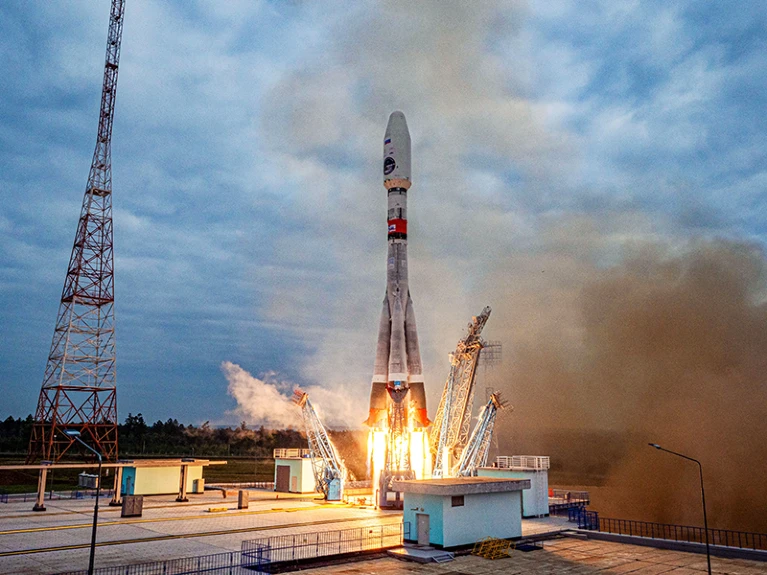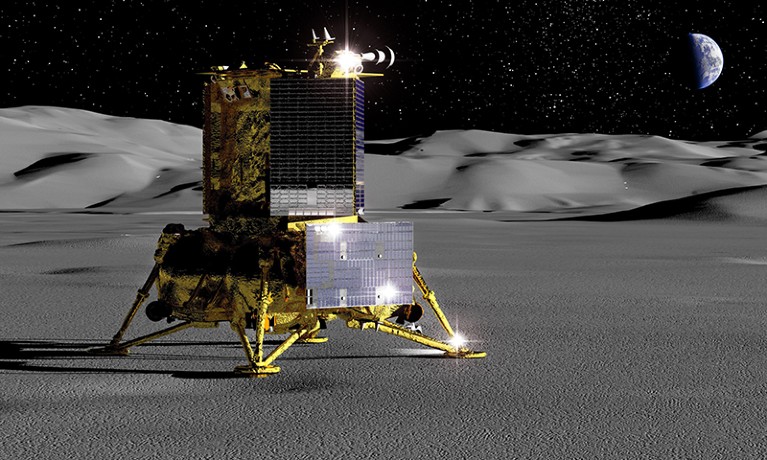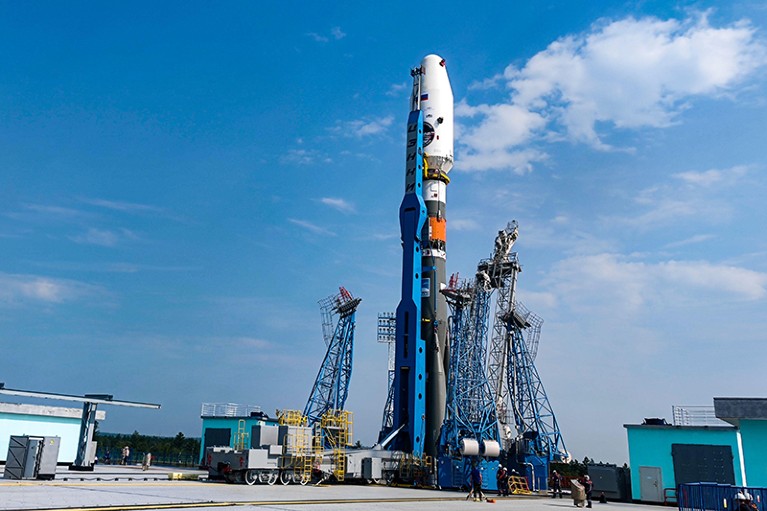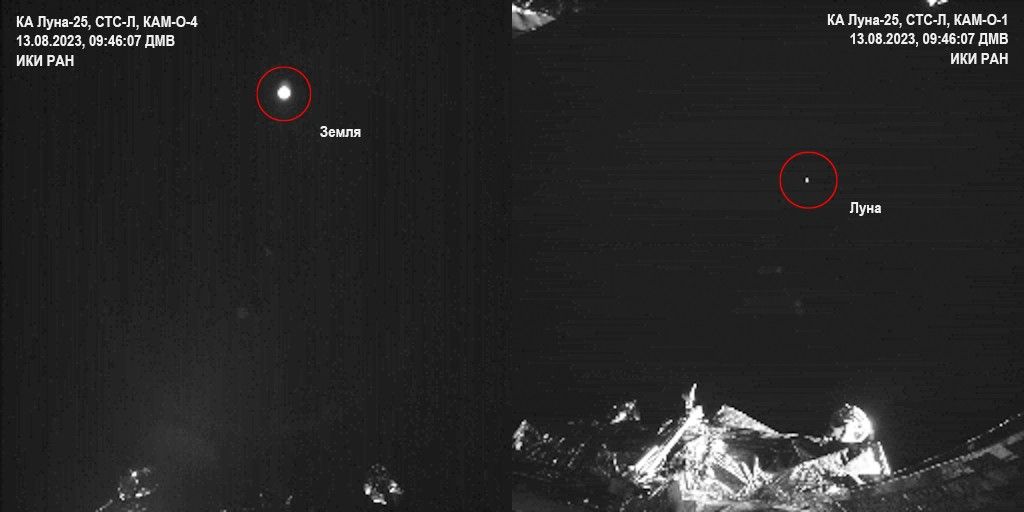Russia and India Flew to the Moon to Fetch a Pail of Water
"[Russia] is a state capable of delivering a payload to the moon [and] ensure Russia's guaranteed access to the moon's surface."Roscosmos, Russian space agency"Study of the moon is not the goal. The goal is political competition between two superpowers -- China and the USA -- and a number of other countries which also want to claim the title of space superpower.""Foreign electronics are lighter, domestic electronics are heavier.""While scientists might have the task of studying lunar water, for Roscosmos the main task is simply to land on the moon -- to recover lost Soviet expertise and learn how to perform this task in a new era."Vitaly Egorov, Russian space analyst
 |
A Soyuz rocket launched Luna 25 to the Moon from Vostochny Cosmodrome in eastern Russia. Credit: ROSCOSMOS STATE SPACE CORPORATION/HANDOUT/EPA-EFE/Shutterstock |
On
Friday a rocket carrying a lunar landing craft shot into the high
atmosphere of Earth and then beyond, representing a new beginning in
Russia's near-half-century of space exploration. The launch represents a
race to produce a landing on the moon, before India's similar launch a
month earlier completes its mission to the far side of the lunar
surface.
From
its launch at Russia's Vostochny spaceport, the Luna-25 spacecraft's
mission is actually the first that Russia has planned and executed since
1976, as the ruling dominant faction of the Soviet Union. It represents
a double gamble; to execute a successful landing, and to see its
arrival blast past India's spacecraft, its second attempt. The day the
Russian lunar lander is expected to reach its goal on the moon is August
23, when India's craft also anticipates a successful landing.
 |
The Luna 25 lander is scheduled to land on the Moon’s surface (artist’s impression).Credit: Mechanik/Alamy |
The
plan is for the Luna-25 to take roughly five-and-a-half days to reach
the vicinity of the moon, with the following three to seven days
orbiting at approximately 100 kilometres, before finally making for the
moon's surface. Following in the footsteps of three previous successful
moon landings: the Soviet Union, the United States, and China. India and
Russia have chosen to become the first to land at the south pole of the
moon.
Russia
has found it far more difficult to access Western technology to achieve
its goal, impacting its space program. It was Russia that declared it
would no longer cooperate with the international space community, in
response to the sanctions imposed after Russia invaded Ukraine.
Initially planned for the Luna-25 to carry a small moon rover, that plan
was abandoned in recognition of a need to reduce the craft's weight to
improve reliability, according to analysts.
 |
The Soyuz rocket on the launch pad at Vostochny Cosmodrome. Credit: Roscosmos State Space Corporation via AP/Alamy |
The
Vostochny Cosmodrome located in Russia's Far East, is seen by Russian
President Vladimir Putin as key to his aspirations to see Russia take
its rightful place as a space superpower. The spaceport is meant to
replace Russian launches from the current location of the Baikonur
Cosmodrome in Kazakhstan.
Of
particular interest to scientists, the lunar south pole is believed to
hold permanently shadowed polar craters that may contain water. That
belief is that the frozen water within the rocks could be transformed
into air and rocket fuel by explorers of the future. To that end, the
Luna-25 is programmed to bring back to Russia samples of moon rock and
dust.
Space
scientists everywhere will be looking to see success in this Russian
space venture, given recent attempts by other countries' space programs
which have failed. Only China since 1976 has successfully landed on the
Moon, with a
lander and rover in both 2013 and 2018, along with a sample-return
mission in
2020. Both India’s Chandrayaan-2 mission and Israel’s Beresheet lander
crashed on the lunar surface in 2019. This April, Japan’s Hakuto lander
came to a like unfortunate end.
"It’s an area where we might expect to see increased concentrations of water ice.""As you go further towards the pole, it gets colder and the potential for water ice increases.""By understanding how the Moon has collected water over time, we could start to piece together the history of water in the Solar System.""We can start asking questions about the local conditions near Earth as it was evolving."Simon Barber, planetary scientist, Open University, Milton Keynes, UK
 |
| Images of Earth (left) and the moon (right) taken by the Luna-25 spacecraft during its flight to the moon on August 13, 2023, from a distance of about 192,625 miles (310,000 km) from Earth. (Image credit: IKI RAS |
Labels: Astrophysics, India, Moon Landings, Russia, Space Exploration

<< Home